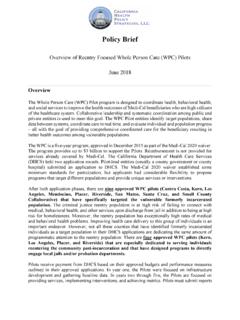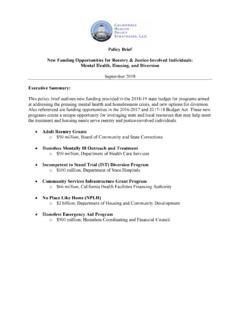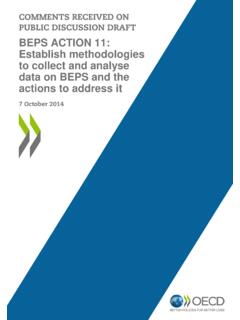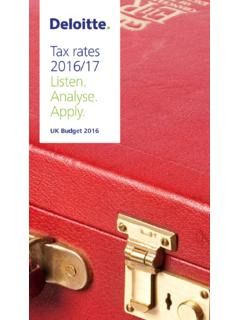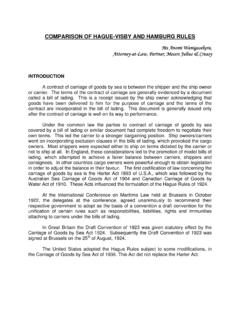Transcription of Policy Brief - CalHPS
1 Policy Brief How Many Incarcerated Individuals Received Psychotropic Medication in California Jails: 2012 2017 By Konrad Franco, David Panush, and David Maxwell Jolly January 2018 Executive Summary ThispolicybriefusesdatafromtheBoardofSta teandCommunityCorrections(BSCC) toestimatethenumberofjailinmateswhorecei vepsychotropicmedicationandassess therelativerepresentationofthisgroupamon gthejailpopulation. Toprovideameasure oftheprevalenceofmentalillnessinjail,wer evieweddatafrom45countiesthat the receipt of psychotropic medications as an indicator of serious mental illness. The following are the main findings of the study: Thenumberofincarceratedindividualsonpsyc hotropicmedicationsis increasing.
2 Theannualaveragenumberofincarceratedindi vidualsreceiving psychotropicmedicationinoursampleof45cou ntiesincreasedbyabout25% between March 2012 and February 2017. Individualsreceivingpsychotropicmedicati onscomposealargeshareof thetotaljailpopulation. Thepopulationofindividualsreceivingpsych otropic medicationrepresentsabout20%ofannualAver ageDailyPopulation(ADP) statewide, as of February 2017. Theshareofthetotaljailpopulationreceivin gpsychotropicmedicationsis increasing. ThepercentofannualADPtakingpsychotropicm edications increasedby4percentagepointsbetweenMarch 2012andFebruary20172012, from 16% to 20%. Methodology Since2002,theBSCC hasconductedasurvey(theJailProfileSurvey )tocollectdata widedataaregatheredmonthly.
3 ,countiesare askedtoreportaveragedailypopulation(ADP) ,thesurvey requeststhatcountiesreportthenumberofinm ateswhoarereceivingpsychotropic medicationforseriousmentalhealthdisorder sthatthejailhasidentifiedonthelastday of the month. Weaveragedtheend of monthcountsofindividualstakingpsychotrop icmedicationsin eachcountyovera12 #onPsychMeds in month statisticislabeledasthe AnnualADP. Usingyearlyaveragesisourattempttoprovide anoverallannualsummarymeasurethatsmooths outmonth to quotientofthesetwovariables,multipliedby 100ishowweobtainedthe %onPsych Meds Total rowisthecolumnsumofthe #onPsychMeds and AnnualADP %Changein#on PsychMeds equalsthepercentchangeinthenumberofincar ceratedindividuals ,wecalculatedthepercentagepointchange inthepercentofannualADPtakingpsychotropi cmedicationsineachcountyfrom PercentPointChangein % on Psych Meds.
4 The results of our full analysis are displayed in Table 1. TheBSCC doesnotprovideadefinitionofwhatcountsasa psychotropicmedication. Thus, itisunclearwhateachjurisdictionusesasthe irdefinitionofpsychotropic medicationsforthepurposesofreportinginth issurvey. However,Section3500(c)ofthe CaliforniaPenalCodedefinesa psychotropicdrug asadrugthathasthecapabilityof changingorcontrollingmentalfunctioningor behaviorthroughdirectpharmacological ,butarenotlimitedto,antipsychotic,antian xiety,sedative, antidepressant, alteringand behavior alteringdrugsthat,inspecifieddosages,are usedtoalleviatecertainphysical disorders,anddrugsthatareordinarilyusedt oalleviatecertainphysicaldisordersbut may,inspecifieddosages,havemind alteringorbehavior 1abletoverifythatSanDiegoCountyusesthisP enalCodedefinitionofpsychotropic.
5 CalHPSwasunabletoverifytheprecisedefinit ionsusedby 2other jails included in this analysis. , 3eitherdidnotreporttheirADPordidnotrepor tthenumberofinmateswhoreceived psychotropic medications for at least two months during a given 12 month period . 1 California Penal Code Section 3500(c) [Link] 2 Personal correspondence with Dr. Alfred Joshua the Chief Medical Officer of the San Diego Sheriff 3 Lassen, Marin, Modoc, Mono, San Joaquin, Sierra, Siskiyou, Sutter, Tehama, and Tulare 1 WealsoomittedAlamedaandSanLuisObispo whiletheyprovidedcompletedata duringthestudyperiod,thetwocountiesconsi stentlyreportedpsychotropicmedication administrationratesthatweremarkedlydiffe rentfromthestatewideaverage.
6 Alameda County,thereportedpercentageoftheirADPre ceivingpsychotropicmedicationfrom March2016toFebruary2017(2%)isdramaticall ylowerthanthestatesampleaverage (20%).InSanLuisObispocounty,thereportedp ercentageoftheirADPreceivingthese medicationsfromMarch2016toFebruary2017(5 0%)isfarhigherthanthestate sampleaverage(20%).Thereasonsbehindthesi gnificantlydifferentresultsforthese twocountiescouldlieinfactorsrelatedtothe reportingofthedataorcouldrepresent real differences in the jail populations. Thetwelveexcludedjurisdictionsaccountedf orabout8%oftheannualADPreported jurisdictionsrepresentedapproximately92% ofthestate stotalADPreportedthatsame year.
7 Findings Thenumberofincarceratedindividualsreceiv ingpsychotropicmedication increasedbyabout25% year longperiodfromMarch2012toFebruary2013the rewereanaverageof 10,999individualsonpsychotropicmedicatio nsacrossthe45jurisdictionsinthis longperiodfromMarch2016toFebruary2017the rewerean averageof13,776individualsreceivingthese psychotropicmedicationsacross the same 45 jurisdictions. ThepercentoftheannualADPonpsychotropicme dicationsincreasedby4 percentagepointsbetweenMarch2012andFebru ary2017. Duringthe year longperiodMarch2012toFebruary2013approxi mately16%oftheannual March2016toFebruary2017roughly20%ofthean nualADPreceived psychotropic medications throughout these same jurisdictions.
8 Countiesvarywidelyintheshareoftheiravera gemonthlyADPreceiving ,roughly32%ofthe ,inGlennandMadera County only about 8 or 9% of the annual ADP receive psychotropic medications. FromMarch2012toFebruary2017,countiesalso experiencedmarkedly differentlevelsofchangeintheaverageend of monthcountsof ,the numberofpeoplereceivingpsychotropicmedic ationsincreasedbyabout42%, ,thisnumberincreasedby26%,from 2,667to3, ,inOrangeCountythisnumberfellby8%,droppi ng from 755 to 693. 2 Discussion Thedatafromcountyjailsshowsanincreaseint hepercentageofincarcerated individualsreceivingpsychotropicmedicati ongrows,countyjailsareincreasingly countiesincludedinthisstudy,41alsoreport edtheamountofmoneytheyspenton psychotropicmedicationsforeachreportingp eriodfromQuarter1,2016toQuarter4, $8,489,620onthesemedicationsduringthis year long period.
9 Theprimaryfindingofthisreport,thatthenum berofincarceratedindividualsreceiving psychotropicmedicationshasincreased, , thisfindingcouldreflectatrendtowardincre asedincarcerationinjailsofseriously ,suchasincreasedhomelessnessordefendants increasinglyfoundIncompetenttoStandTrial (IST),couldpotentiallycontributetothis ,theconsequencesofstatepolicychangesunde rPublicSafety Realignmentthathaveredirectedinmateswith lowerleveloffensestojailwho ,the increaseweobserveinincarceratedindividua lsbeingprescribedpsychotropic medicationsmightnotbeduetoincreasednumbe rsofincarcerationsofmentallyill individuals,butrathertobetteridentificat ion,diagnosis,andtreatmentofseriously 3 which jails have changed their practices during this period.
10 Measuringthenumberofjailinmatesreceiving psychotropicmedicationcouldserveas apossibleproxyforthenumberofindividualsw ithseriousmentalillnessinjail. However,thereliabilityofthesefiguresdepe ndsontheconsistencyofmentalhealth assessment,diagnostic, JusticeandBehavioralHealth(CCJBH),former lyknownastheCouncilofMentallyIll Offenders(COMIO),andothershaverecommende dtheadoptionofstandardized 4processcouldallowforamorepreciseaccount ingofthementallyillpopulationin ,inthe shortterm,theBSCC dataprovidesausefulbaselinetohelpunderst andlocal incarcerationtrendsrelatedtoseriousmenta llyillindividualsandcanhelpinform policies that attempt to address this issue.


